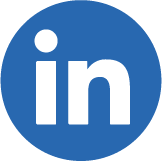Government directives, consumer expectations, competitive pressure and risk mitigation – there are many reasons that push companies to achieve full transparency and traceability throughout their supply chain. However, it’s a very ambitious objective due to the complexity of the task, multiplicity of actors, interdependence of economies and globalization of supplies.
How do you access supplier data? How do you detect non-compliance with your ethical policies? How do you correct non-compliance in areas as diverse as contracts, working conditions, the origin of materials, environmental performance or even financial procedures?
In this interview, Jessica Ingram (SGS) is joined by Frédéric Daniel (Transparency-One) and Franck Poulain (Microsoft) to discuss how you can achieve supply chain transparency using digital tools and processes based on cutting-edge technologies. To listen to this interview in French, please click here.
Speakers
 Frédéric Daniel
Frédéric Daniel
CTO at Transparency-One

Franck Poulain,
Partner Technology Senior Director at Microsoft

Jessica Ingram
Global Head of Digital Communications at SGS
Interview Highlights
Transparency and traceability are at the heart of supply chain management strategies. What exactly do these two terms cover?
Frédéric Daniel [FD]: “Transparency means being able to fully understand your supply chain so that you are able to grab all of the information you need and share it with your consumers. With traceability, we’re thinking more about the operational aspect, such as tracing a specific batch.”
Can you explain the value proposition of Transparency-One?
FD: “Transparency-One delivers a platform to enable digitalization of the entire supply chain – distributors, brands, manufacturers, suppliers, and so on. This ensures that, for instance, the code of conduct that you have as a brand is actually respected by everybody within the supply chain.
“For example, if you’re selling organic products, you will want to ensure that not only has your direct supplier got the organic certification required for you to sell your product, but everybody within the supply chain has the same certification. Transparency-One enables you to match the entire supply chain and gather all of the information to ensure that it is in line with brand or distributor requirements and then share this information with consumers.”
I understand the Transparency-One platform uses graph technology to map large supply chains. Can you explain how that works?
FD: “The entire ecosystem of all of those different suppliers, manufacturers, and so on, is highly connected. Everybody is working with everybody across the entire planet. So, you need the right technology to ensure that you are managing the connections between those different points of your network efficiently. And this is what graph technology is about.
“But Transparency-One is also about gathering the right information, the right piece of data, from within the network. We use a big bench of technology to enable you to manage connections, manage the data that you want to gather, access the right supplier, ask them the right questions and bring it back to the brand or the distributors.”
Transparency-One is based on Microsoft technology – in particular, Azure. Why did you choose this technology?
FD: “Our choice of Microsoft has been driven by two key elements. Number one, we needed a partner to bring all of these different pieces of technology together. Microsoft has all of those different pieces of technology. Number two, Microsoft is one of the biggest cloud providers out there. We needed a cloud provider that was able to really help us grow our offering with the cloud. Microsoft is really able to support us in a manner which is just unique out there.”
Franck, can you tell us a little bit about Microsoft’s involvement?
Franck Poulain [FP]: “The choice of Azure is the result of a strong relationship that we’ve had with Transparency-One for a long time. They trust us and we trust them. So, we advise and innovate with them.
“Transparency-One is a managed partner at Microsoft, so there is a high visibility of the company inside the Microsoft organization. We have a dedicated team with a Product Development Manager and a Cloud Solution Architect, able to provide advice on the evolution of the platform. For example, to improve the security level and invest in new innovations, such as IoT and AI, we have reviews with Transparency-One to ensure that they use latest technology.
“Our role is really to provide the capacities, capabilities and technology to innovate and to address digital transformation.”
What industries or even types of clients would use Transparency-One?
FD: “For instance, here in France, we are working with Intermarché. In the US, we’re working with Macy’s. So a lot of different types of organization worldwide. We’ve been focusing on food, clothing, cosmetics and luxury. But at the end of the day, understanding your supply chain, gathering the right information and securing your supply chain is important for all industries.
“The key message that I would like to pass on is: start now. Some organizations may believe that it is a complex topic. But, as with any complex topic, you just need to cut it into pieces to make it simpler. The first step is to start collaborating and understanding who you are working with. Understand who your direct partners are because they have a big impact on risk. They have a big impact on the product you’re delivering to your customers. So, the sooner you work with your extended supply chain, the sooner you’ll be able to start helping them improve the way they are working, the quality and the engagement with your customers and consumers.”








